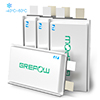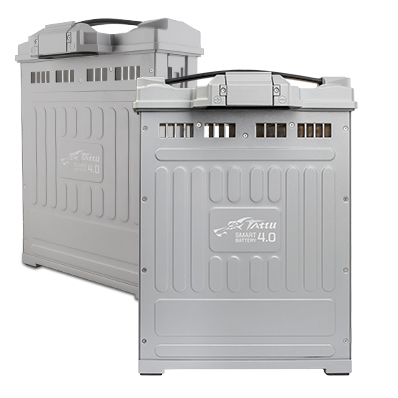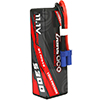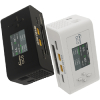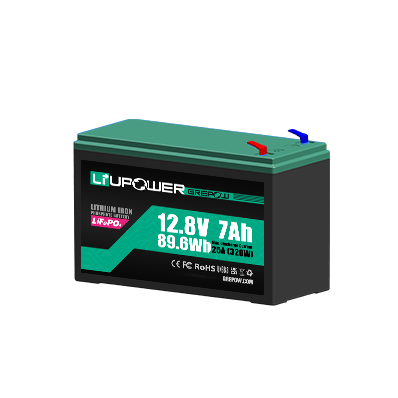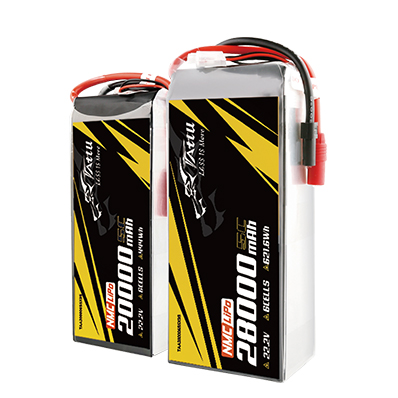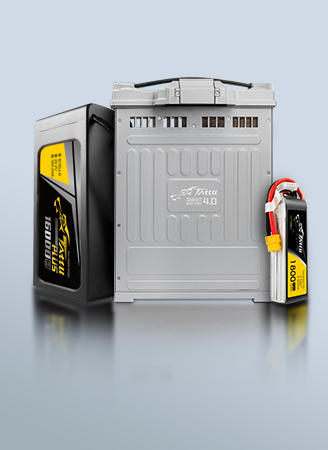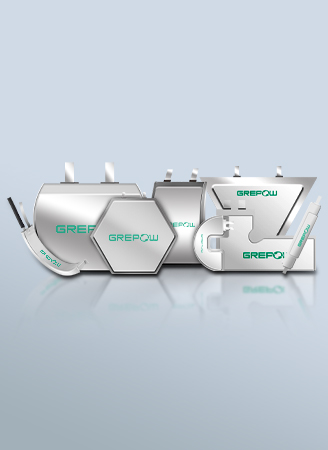What Is The Internal Resistance of a Drone Battery?
For any drone pilot, from FPV racers to professional aerial cinematographers, the battery is the heart of the aircraft. While we often focus on specifications like voltage, capacity, and C-rating, there's a less-discussed but critically important metric that dictates a battery's true performance, health, and safety: “Internal Resistance (IR)”. Understanding IR is not just for electrical engineers; it's a practical skill that can save you from poor performance, premature battery failure, and potentially dangerous situations. This guide will provide a comprehensive look at the internal resistance of drone batteries, explaining what it is, why it's a vital sign of your battery's health, and how you can use this knowledge to get the most out of every flight.
What is a drone battery?
A drone battery is a high-performance power source specifically designed to meet the extreme demands of unmanned aerial vehicles. The vast majority of drone batteries today are “Lithium-Ion Polymer (LiPo)” batteries. They are favored for their high energy density (more power in a lighter package) and their ability to deliver massive amounts of current very quickly, which is essential for powering high-revving drone motors.
Key characteristics you'll see on a drone battery label include:
Voltage (V): Indicated by the "S" rating (e.g., 4S for a 4-cell battery, 6S for a 6-cell).
Capacity (mAh): Milliam-ampere hours, which determines how long the battery can provide power.
Discharge Rate (C-Rating): The theoretical maximum rate at which the battery can be safely discharged.
Unlike a battery for a TV remote, a drone battery must withstand huge current spikes and sustained high-power output, which is precisely why its internal resistance is so crucial.
Why does internal resistance matter in drone batteries?
Think of internal resistance as electrical "friction" inside the battery. Every time you draw current, this friction opposes the flow of energy. In a low-demand application, this friction is negligible. In a high-demand drone, it becomes a defining factor for three key reasons:
1. Performance: Lower IR allows the battery to deliver current more efficiently. This translates directly to more "punch" during acceleration, less voltage sag under load, and a more responsive, powerful drone.
2. Health: IR is the single best indicator of a battery's health and age. A new, healthy battery has very low IR. As it ages, undergoes charge cycles, and is exposed to stress, its IR inevitably increases.
3. Safety: The energy lost to internal resistance is converted directly into heat. High IR means more heat. Excessive heat is the primary enemy of LiPo batteries, leading to cell damage, swelling ("puffing"), and in worst-case scenarios, a dangerous event called thermal runaway (fire).

What is the internal resistance of a drone battery (IR vs. ESR)?
While often used interchangeably in the drone community, there's a technical distinction between two types of internal resistance:
DC Internal Resistance (DC-IR): This is the battery's "true" resistance to
direct current, representing the real-world opposition to energy flow when
powering your drone. It is calculated using Ohm's Law by measuring the voltage
drop under a specific load:
RDC=(Voltageno−load−Voltageload)/Currentload
AC Internal Resistance (AC-IR or ESR): This is what most hobby-grade smart chargers measure. It stands for "Equivalent Series Resistance (ESR)" and is technically an "impedance" measurement, not pure resistance. The charger sends a small, high-frequency AC signal (typically 1kHz) through the battery to measure its opposition to that signal.
For practical purposes, while AC-IR is not the same as DC-IR, it serves as an excellent and consistent proxy for a battery's health. When your charger shows you an IR value in milliohms (mΩ), it is almost always referring to the AC-IR.
How to measure internal resistance of a drone battery?
Measuring your battery's IR is straightforward with the right tools. Here are the most common methods:
1. Using a Smart Charger: This is the most popular and accessible method. Modern chargers from brands like iSDT, HOTA, ToolkitRC, and others have a built-in function to display the IR of each individual cell. Simply connect your battery's main and balance leads and navigate to the "Battery Resistance" or similar menu.
2. Using a Dedicated ESR/IR Meter: For more precise and consistent
readings, a dedicated battery internal resistance meter is the best option.
These devices often use a four-wire (Kelvin) connection that eliminates the
resistance of the measurement leads themselves, providing a more accurate
reading of the battery's internal state.
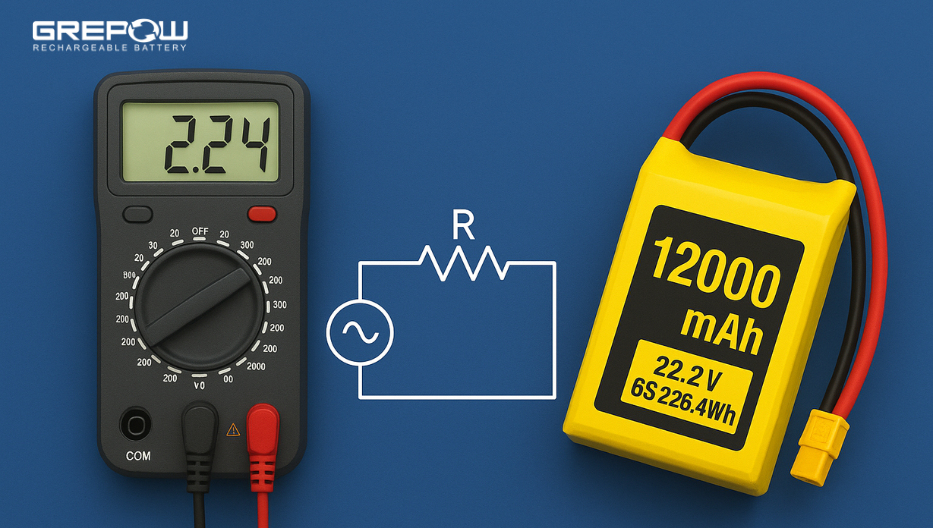
Best Practices for Consistent Measurement:
To track a battery's health over time, your measurements must be consistent.
●Measure at a Consistent Temperature: A battery's IR changes with temperature (lower when warm, higher when cold). Always measure at room temperature (~25°C or 77°F) for a reliable baseline.
●Measure at a Consistent State of Charge (SoC): IR varies depending on how charged the battery is. The industry standard is to measure at storage voltage (~3.80-3.85V per cell).
●Ensure Clean and Solid Connections: A poor connection at the plug will add its own resistance and skew the reading.
What is a normal or good internal resistance for drone batteries?
"Good" IR is relative and depends on the battery's size, C-rating, and quality. For large-capacity drone LiPo batteries in the 12000 mAh – 22000 mAh range (commonly used in professional aerial cinematography, mapping, and agricultural UAVs), here are general guidelines for a single cell:
Internal Resistance (per cell) | Health Status | Performance Expectation |
0 – 1.5 mΩ | Excellent / Brand New | Maximum power delivery, minimal voltage sag. Ideal for heavy-lift applications. |
1.5 – 3 mΩ | Good / Healthy | Strong performance, reliable for professional operations. |
3 – 5 mΩ | Average / Slightly Aged | Noticeable voltage sag under load. Still usable but reduced endurance. |
5 – 8 mΩ | Degraded / Old | Significant performance loss. Relegate to training or low-demand flights. |
> 8 mΩ | Critical / Unsafe | High risk of overheating and failure. Retire immediately. |
The Golden Rule: More important than the absolute number is the "change over time". A brand-new battery's IR is its baseline. If a cell's IR "doubles from its original value", it is a strong sign that the battery should be retired from high-demand use.
How internal resistance affects drone battery performance?
The effect of IR on performance is a matter of physics and is most noticeable during flight.
●Voltage Sag: This is the most immediate effect. When you punch the throttle, the current draw ( I ) is massive. This current, flowing through the internal resistance ( R ), causes an internal voltage drop ( Vdrop = I × R ). This drop is subtracted from the battery's nominal voltage, causing the voltage seen by your flight controller to plummet. High IR leads to severe voltage sag, which can trigger low-battery warnings prematurely or even cause the drone to fail-safe.
●Reduced Power Output: Power is a product of voltage and current ( P = V × I ). Since high IR causes the effective voltage to drop significantly under load, the total power delivered to your motors is reduced. Your drone will feel sluggish, less responsive, and unable to perform aggressive maneuvers.
●Shorter Flight Times: The energy lost due to IR is dissipated as heat, calculated as P = I2 × R. This is energy that is completely wasted and does not contribute to flight. A high-IR battery will get hotter and deliver less of its stored capacity to the propellers, resulting in shorter flight times.
Impacts of high internal resistance drone batteries
Flying with high-IR batteries is not just inefficient; it's dangerous.
1. Excessive Heat Generation: The battery becomes a heating element. A hot LiPo is an unhappy and unsafe LiPo.
2. Battery Swelling ("Puffing"): Heat accelerates the decomposition of the electrolyte inside the battery, which produces gas. This gas pressure causes the battery's flexible pouch to swell. A puffed battery is a clear sign of internal damage and should be handled with extreme caution and retired.
3. Reduced Cycle Life: Every time a battery is stressed by excessive heat, its internal chemistry is permanently damaged, leading to a rapid increase in IR and a drastic reduction in its usable lifespan.
4. Risk of Thermal Runaway: In extreme cases, the heat generated by a high-IR battery under heavy load can trigger a catastrophic chain reaction where the cells vent flammable gases and ignite.
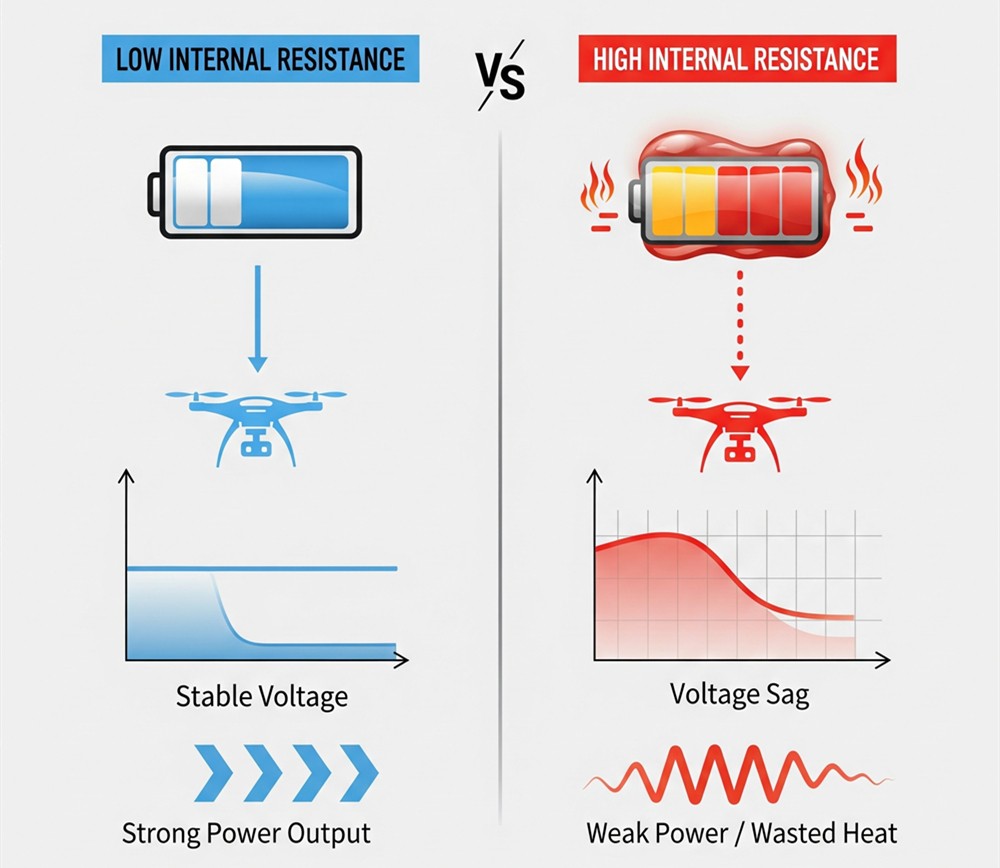
What factors affect the internal resistance of drone batteries?
A battery's IR is not static. It is influenced by several factors:
●Age & Cycle Count: This is the primary factor. As a battery is used, irreversible chemical changes increase its IR.
●Temperature: IR is temperature-dependent. It decreases as the battery warms up (to a point) and increases significantly in the cold. This is why pilots pre-heat batteries in winter.
●Physical Damage: Crashing your drone can cause internal damage to the cell structure, leading to an instant and permanent increase in IR.
●Improper Storage: Storing a LiPo fully charged for extended periods is one of the fastest ways to degrade it and increase its IR.
●Over-Discharging: Flying a battery down to a very low voltage can cause permanent chemical damage.
●Manufacturing Quality: Higher-quality cells from reputable brands are manufactured with better materials and to tighter tolerances, resulting in lower initial IR and slower degradation over time.
How to optimize and reduce internal resistance?
While you cannot reverse the increase in IR from aging, you can take several steps to slow down the process and optimize your battery's performance:
1. Proper Storage is Key: This is the most important rule. Always store your LiPo batteries at storage voltage (~3.85V per cell) in a cool, dry place. Never leave them fully charged or fully discharged for more than a day.
2. Don't Over-Discharge: Land your drone when the battery reaches a safe resting voltage, typically no lower than 3.5V per cell.
3. Charge Appropriately: Use a quality balance charger and avoid charging at excessively high rates (1-2C is generally safe for most batteries).
4. Warm Up in the Cold: In cold weather, gently pre-heat your batteries to around 25-30°C (77-86°F) before flying to lower their effective IR and improve performance.
5. Buy Quality Batteries: Invest in batteries from reputable brands known for good performance and longevity.
By regularly monitoring your batteries' internal resistance and following
these best practices, you can ensure each pack delivers maximum power, enjoys a
long and healthy life, and keeps you flying safely.
Conclusion
Internal resistance (IR) is a critical yet often overlooked metric that dictates the true health, performance, and safety of a drone's LiPo battery. This internal "friction" directly impacts power delivery; a low IR ensures stable voltage and strong power output under load, while a high IR causes significant voltage sag, power loss as heat, and increased safety risks like swelling. Leading manufacturers like Grepow, renowned for their high-performance Tattu drone batteries, specifically engineer their cells to have exceptionally low initial internal resistance and maintain it over many cycles, catering to the extreme demands of professional aerial cinematography and FPV racing. Therefore, for any serious pilot, regularly monitoring IR is not just a technicality—it is the most reliable way to assess a battery's condition, predict its performance, and ensure the safety and longevity of their power system.
Related Articles
-

Powering Aerial Artistry: Grepow Battery Solutions Behind Drone Light Shows
2025-10-27 -

Vatican Drone Show: Where Technology Meets Faith
2025-09-15 -
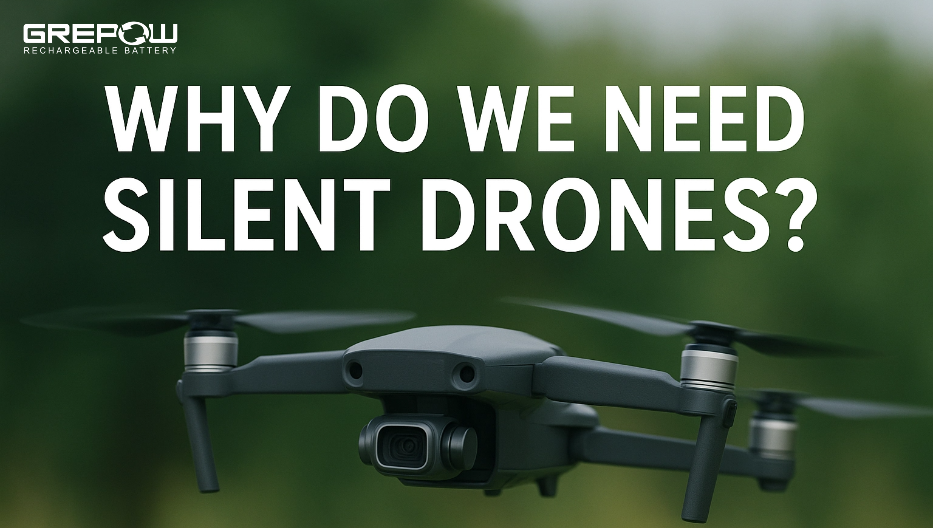
Why Do We Need Silent Drones?
2025-09-02
Related products
-
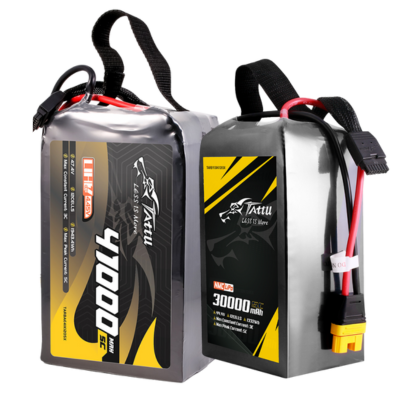
Tattu 12S LiPo Drone Battery Series
-
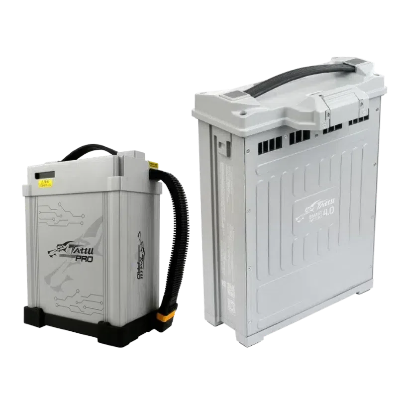
Tattu Agricultural Drone Battery
-
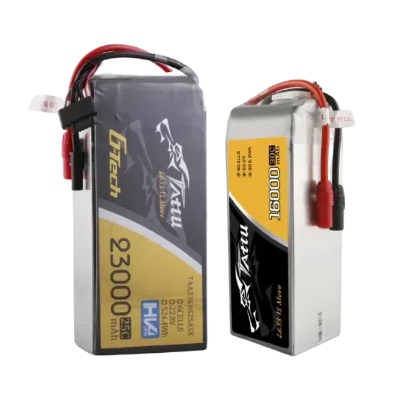
Tattu 6S LiPo Drone Battery Series






